ORBIT BURO ART
What is Orbit Buro Art?
We are an art initiative ran by members of the OrbitBuro discord server! This is a leftist discord server aimed at making leftist education more accessible.
Orbit Buro Art's aim is to shift the popular perception of the communist movement by highlighting the realities of the movement, ideology, and communist countries. This also allows us to counter fascist, capitalist propaganda!
We will be creating monthly zines discussing a variety of topics, and plan to use our Twitter account to boost communist creators.
You can find our zines here!
2020
Want to find out more or join us? Talk to us on:
July 2020: The Radical Nature of the LGBT+ Community & Criticisms of Liberalism
On the Liberal Nature of Gender Discourse
-by Osaa
There has been growing awareness of trans identities in much of society. Much of this has led to growing amounts of progressives, advocates, or allies to trans rights. People are beginning to acknowledge that gender as we know it is a social construct. Some may be aware of precolonial eras when transness was acceptable in many cultures. So, why is it that we approach transness with the need to compartmentalize it into something acceptable to liberals? Why is there emphasis on tying transness to suffering without working to dismantle the its source ? Why are our identities beyond the imagination of those living on colonized land? Because liberalism has diluted the complexity and fluidity of transness to fit a scale understandable to them-- because they want us to believe in symbolic victories while closing the door to liberation--because they do not want to meet us where we are, and would rather for us to conform to them.
Perhaps my experience and perspective on gender discourses, has led me to asking these questions. As a young child, I had never thought all that much about gender. Under a cisnormative society, I was presumed a girl, and had never given the idea of being a girl much thought. When I became more politically aware, interactions with words like "woman of color" contained a certain emptiness. This was because it did not feel like it encompassed my experiences and perspectives. I had always assumed I was cisgender by default, and reasoned that my inability to explain gender was because of that. This contrasted with the prominent idea of knowing your divergence early on in your childhood. While this is an applicable narrative to some trans peoples' experiences, it is clear that the association with divergence is etched into the very fabric of liberal transness. As I started to question what gender meant to me, it became more evident that because of our association with divergence, there existed a certain expectation for trans people under the cis gaze: for us to suffer.
Prominent gender discourses posit gender as a compartmentalized identity. There exists implicit assumptions for our experiences, outlooks, and interactions with society. Within the imagination of a liberal society, our identities exist in a vacuum. Our transness becomes all-consuming, yet capable of becoming reduced to a simple label on a color-coded box. And through this box, cis people gain the benefit of understanding a digestible version of us. While this recognition of transness has granted us a certain level of acceptance under cisnormativity, it implicates us with deviancy. It is, in a sense, a large sign hanging above us, telling other people we are different. Yet within this sign is not an explanation of the colonialist structures that have posited us as different. Instead, that is glossed over with colonial explanations of gender and biology. We are then explained as deviant through our separation from "biological sex." This unrealized connection between our identities and the system that has led to creation of these identifiers means that the state can continue to oppress us in many unchecked ways.
Liberalism also serves to dilute realized connections between gender as a social construct and the role of colonialism in perceptions of gender. When colonialism is discussed within popular gender discourses, it is used as a "gotcha" to prove our validity in the liberal landscape instead of as a critique of how we perceive gender today. As a result, there is no serious resistance to the colonial vestiges that have created the notion of gender as we see it, there is no realized connection that decolonization is a necessary part of trans liberation, and there is no widespread awareness that the liberal landscape prioritizes the maintenance of the colonial state over the livelihoods of trans people.
The importance of validity within liberalism bleeds into politics on the Global South. While we invoke colonialism's name to explain the suppression of our identities, the state uses the symbolic victories they've offered us to justify more of the pillaging they have committed before towards trans people in the Global South, only this time in the name of "humanitarian intervention." This stems from a deliberate failure to perceive intersections of class, race, and sexuality to transness. As a result, the state can define trans liberation by the amount of trans people entering and exerting power in the same systems that have oppressed us, rather than actual improvements to our material conditions and safety. This form of "liberation" especially caters to white bourgeois trans people, who are more likely to have better material conditions and are considered much more palatable in comparison to working class Black trans people.
The liberal nature of gender discourse serves to obscure the path to trans liberation. We must develop awareness of the colonial notions of gender that have led to our oppression. Then, we must realize that liberation is antithetical to colonial interests. We must learn about the differing intersections of race, class, and sexuality with transness. This way, we can work towards improving their material conditions. In addition, we must show solidarity towards trans people in the Global South. Liberation begins with seeing through the diluted lies liberal gender discourse offers. From then, we can begin to take action against the colonial state.
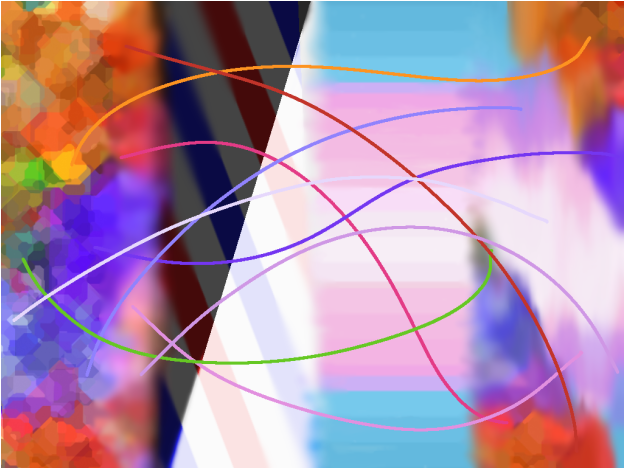
On the Liberal Nature of Gender Discourse: A Visual Interpretation
-by Em
Image Description: The left of the image is a colourful mosaic representative of the absence of a binary, the blending of sexuality and gender expression seen in native cultures before colonialism. The middle-left is a black/white separation, representing the binary that became the 'norm' during colonialism. This is overlaid with red, white, and blue stripes, specifically referencing the many guilty parties across Europe that use these colours in their flags, as well as the United States. The middle-right is the trans flag, representative of the slow acceptance and ingratiation of more identities into society, however the red, white and blue stripes are still clear as we still live in a binary system, and ideas of gender is still heavily impacted by this. The far right is the blurring of the trans flag and the original mosaic, representing a future where there may be a shift towards the absence of a binary, as well as acceptance of all sexual and gender identities. The lines across and the blurred lines between each section connect everything together, joining colours from one end to the other to show how these things have impacted each other. The image overall acts almost like a timeline from left to right of gender in a pre-colonial society to today.

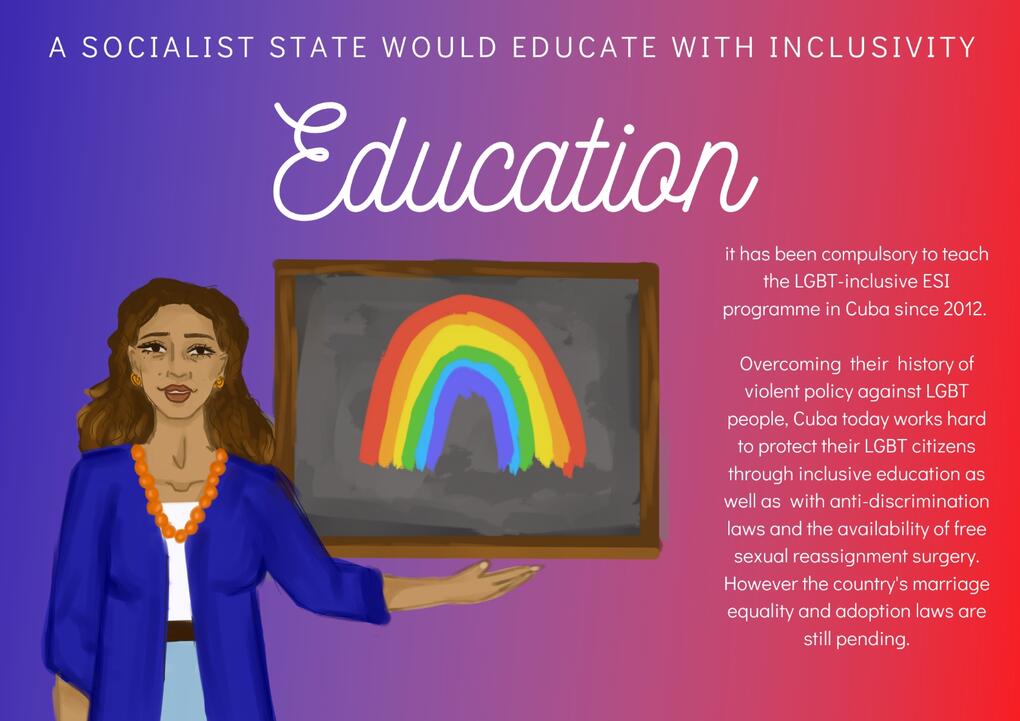
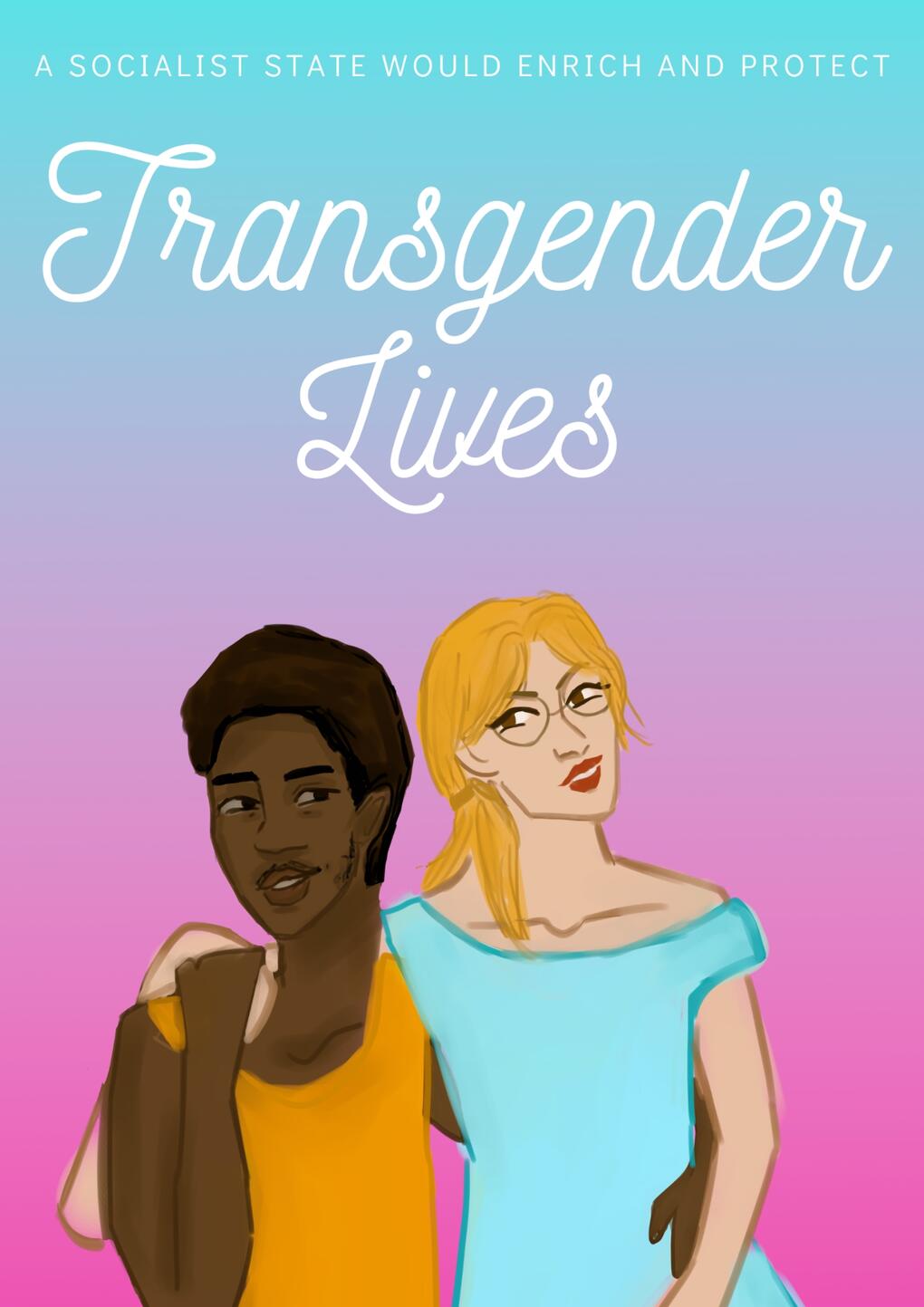
-by Mia
Image Description: A series of three posters. The first poster is of two women in wedding dresses, holding hands, over an orange-purple gradient background. The text reads "A socialist state would protect marriage equality".
The second poster has a woman in front of a blackboard with a rainbow drawn on it. The title of the poster is "A socialist state would educate with inclusivity". Further text on the poster reads "It has been compulsory to teach the LGBT-inclusive ESI programme in Cuba since 2012. Overcoming their history of violent policy against LGBT people, Cuba works hard today to protect their LGBT citizens through inclusive education, as well as with anti-discrimination laws and the availability of free sexual reassignment surgery. However, the country's marriage equality and adoption laws are still pending."
The third poster depicts two trans people, one Black and one Caucasian. The text reads "A socialist state would enrich and protect transgender lives".
This series aims to confront common disinformation regarding LGBT rights in socialist countries, and highlight what socialists should strive for.
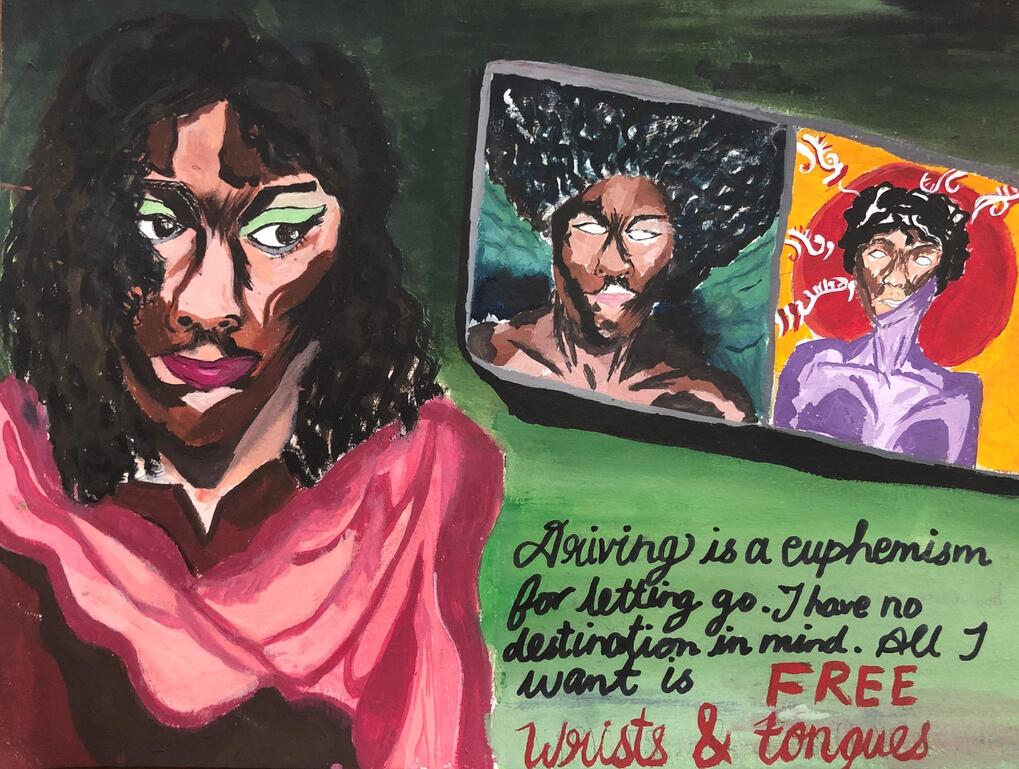
-by Aftan
Image Description: This painting is inspired by a lot of things, but mainly of how as a South-Asian nonbinary person, my gender reflects differently as being "woman" in my community versus truly feeling agender. A person presenting as a cis woman wears a pink and red kurta and dupatta, solemnly gazes to the right as if in contemplation. In this direction, there are two mirrors reflecting the person in transformation, or amidst dreams of idealised gender expression. The first mirror depicts a person underwater naked. The second mirror reveals a transformation, of accepting themselves to be nonbinary and "woman" in relation to their community. The person appears to be emerging through a cracked purple shell, over a background of yellow and red. Below this, the text reads "driving is a euphemism for letting go. I have no destination in mind, all I want is free wrists and tongues."
August 2020: Discussions of Creativity under Capitalism and Socialism
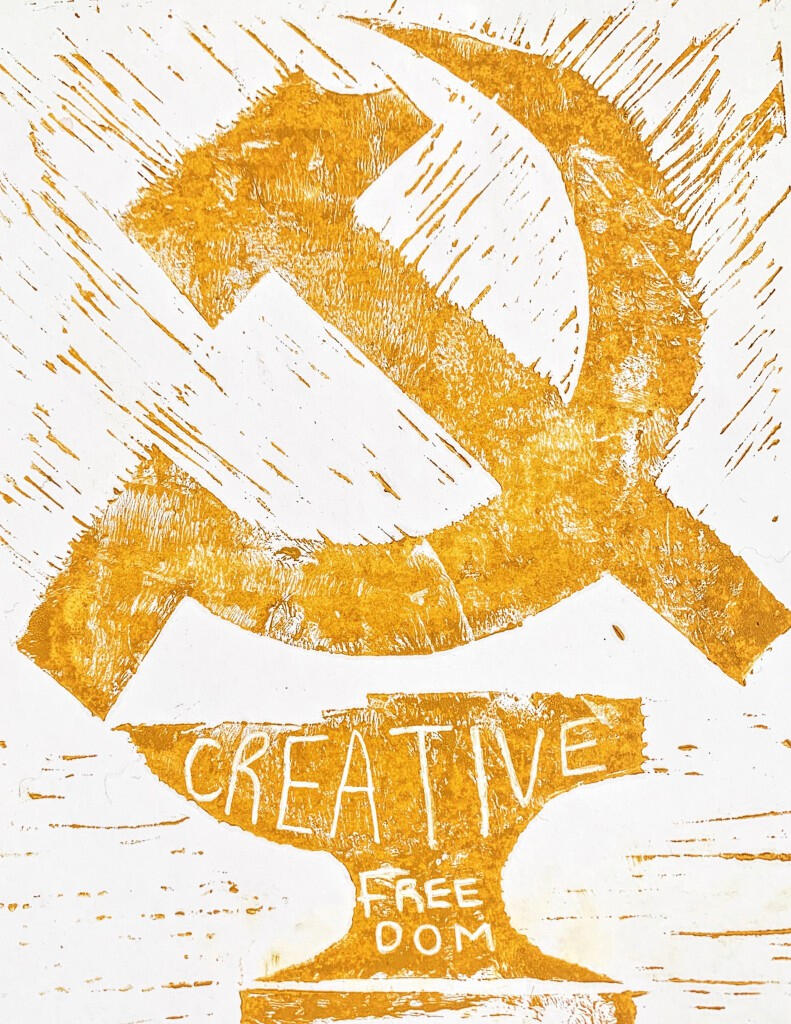
-by Mia
Image Description: A lino-printed image of the hammer and sickle icon over a metal-working anvil is shown, both images are printed in gold on a white background. The hammer and sickle icon floats above a simple two-dimensional anvil symbol which displays the text 'Creative Freedom' in white in the body of the anvil. The style is simple and iconographic.
The scratch-like appearance of the linoleum stamp produces a rustic appearance to the white background.
The meaning of the piece is to show that complete creative freedom can be achieved when the machinery of creation and production are in the hands of the people. Such can be achieved through communism and enjoyed without the limitations that capitalism forces on the artist and production of art.
a flower sleeps in the sea
-by Osaa
a flower sleeps in the sea;
it yearns to wake.
it feels melancholy for something it knows it cannot find,
yet it reaches
for the moon.
it reaches for something that does not yet exist;
it reaches for a future it will not live long enough to see.
a flower sleeps in the sea;
it feels nostalgia for something it has not experienced.
it tilts inward and dreams
of floating towards the surface
to meet the sun.
it wants to reveal itself, to reveal
a silent secret.
a flower sleeps in the sea;
it knows it cannot live like this forever.
it knows it's not meant to be
forever submerged,
forever stifled,
forever silent.
yet this fate weighs
heavy on its petals
and this fate's water
suffocates it slow.
a flower sleeps in the sea;
if only it could wake in a garden.
Fatigue
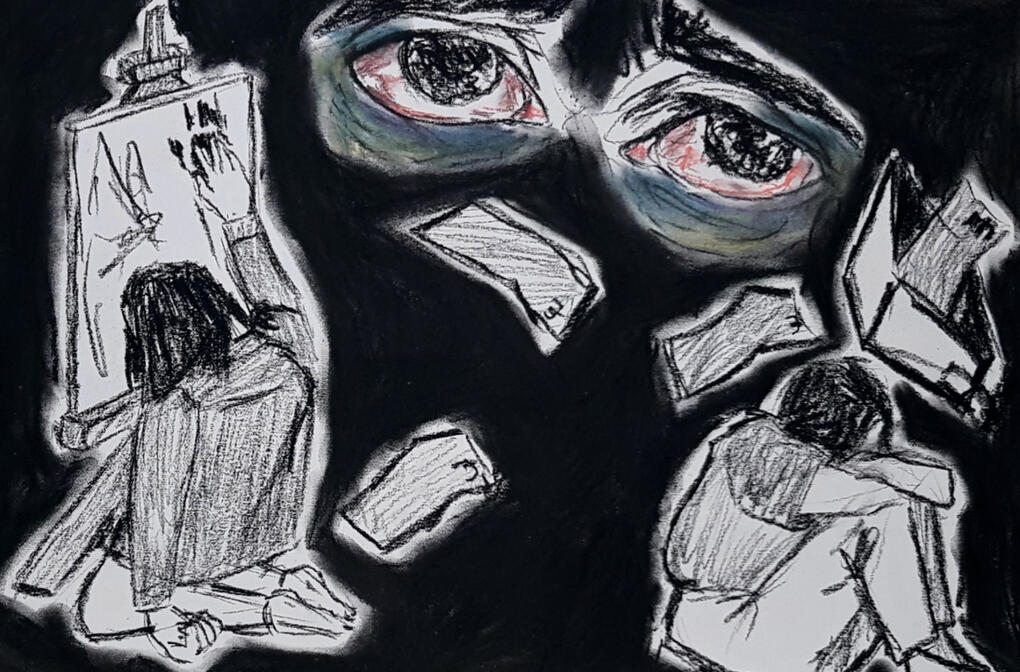
-by Tez
Image Description: There are four main components to this piece, almost entirely done with black compressed charcoal. In the left, an artist kneels slumped in front an easel and canvas, empty except a hand print trailing down to where the artist touches the canvas with a sense of hopelessness.
At the top, there is a pair of bloodshot eyes with heavy blue, purple, and green under-eye bags. This is the only aspect of the piece with any colour.
At the bottom right, there is a person holding their knees drawn tightly to their chest, as though they are forlorn.
At the top right, there is a wallet empty except for a single note. Three other pound notes are scattered across the image, representing the financial struggles of the artist under capitalism.
The background is done entirely in black charcoal, so the images become the main focus of the piece.
Hope / Art
-by Tez
Hope is a fickle thing-
a word and it shatters like glass
a thought and it snaps like a branch
a letter and it breaks like a bone.
Hope is a fickle thing-
But. It perseveres, returns, continues on
and on and on.
Always comes back.
Art, too, is a fickle thing-
It perseveres returns, continues on
and on and on.
Always comes back.
Even when-
a disapproval shatters it like glass
a pointless label of 'value' snaps it like a branch
an assigned worth breaks it like a bone.
How much money will you make?-
Is this a real job?-
Do you really think you're good enough?-
The questions never end.
Capitalism says:
You're not worth the money.
You're a joke.
You'll never be good enough.
Hope is a fickle thing,
but it perseveres.
It withers under capitalism and is
reborn when it sees socialism.
Socialism says:
You'll earn what you deserve and we all deserve the world.
You are priceless, your art is irreplaceable.
Believe in yourself, we will support you.
Art, like hope, is a fickle thing.
Under capitalism, it must persevere,
Under socialism, it flourishes.
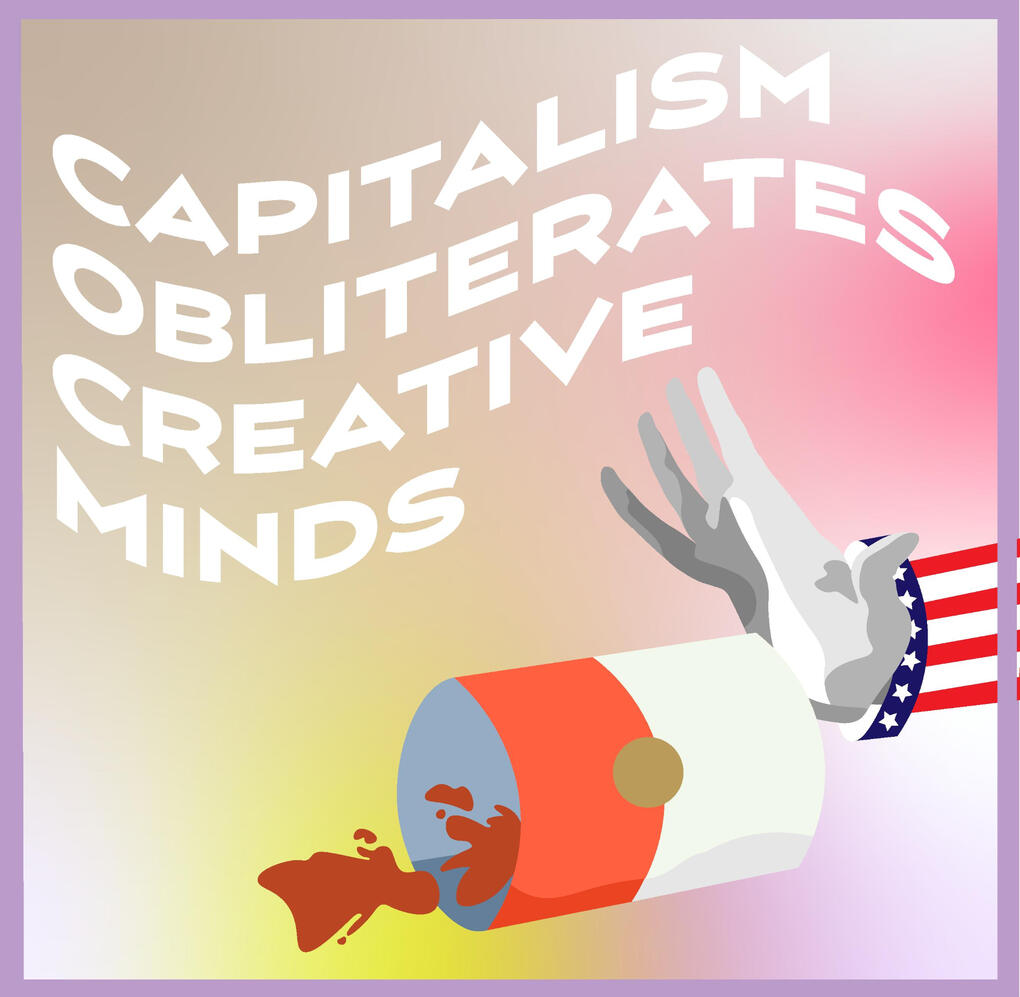
-by Leif
Image Description: An arm with red and white sleeves and a navy cuff with white stars on it representing the United States pushes over a Campbell's tomato soup can, resembling Andy Warhol's famous print. To the left of that is text stating "Capitalism obliterates creative minds", highlighting how the US discourages and is destructive in the face of art and creativity.
October 2020: The Use of Art as Propaganda to Spread Ideology
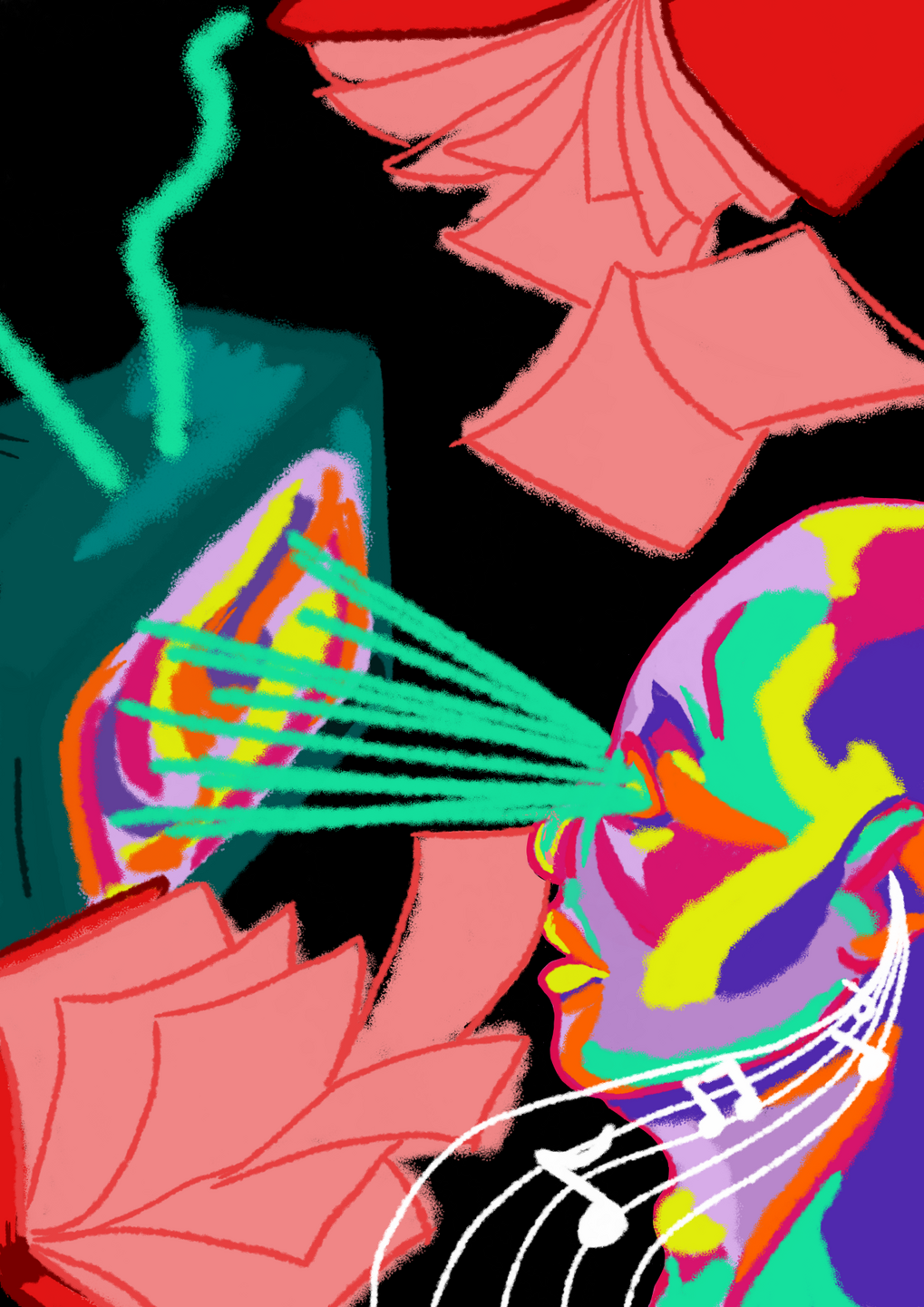
-by Tez
Image Description: On the left hand side, an old-fashioned TV faces to the right at a three quarter angle. The TV is a blue-grey with bright blue antennae. The screen consists of a swirl of purples, pink, orange, and yellow. Lines the same colour as the TV antennae connect the television to the eyes of a a person facing left at the right-hand side of the poster. The person's face has been coloured with the same colours as that of the TV screen.
In the bottom left and top right, there are red books open with pink pages spilling from the books. The line art on the pages is purposefully messy, both the pink bleeding out onto the black background, and the black background bleeding into the pages.
From the person's ear, there is a music stave done in white and musical notation randomly dotted on the stave.
In the midst of it all
-by Osaa
in lonely nights
i wonder how the earth feels
breathing through concrete
and asphalt
and a polished brown wood,
how many breaths it has left in it
before it sputters to a stop-
the moment we all die
in the midst of our own monster.
poison billows through my window
like oxygen
and i breathe it in
until it reaches
every part of my body
and i exhale;
release it into the wind so i can share it with someone else.
with someone else;
how long has it been since i haven't
seen anything
other than smoke
and the real synthetic nature
of human touch?
sometimes i wonder
if the earth resents us for breathing what it has told us
not to breathe:
blood and bandages;
does it resent us for not
feeding our children right,
does it implore us to give each other something other than
war and saccharine "greater good"s?
i'm lonely
so i'm not thinking straight,
someone would say,
so in the night i lean into the manufactured static
of my television
and let my worries fade away.
we are delicate as china after all,
and it is them we must destroy
to be safe;
the earth can breathe a little longer.
Master of Words
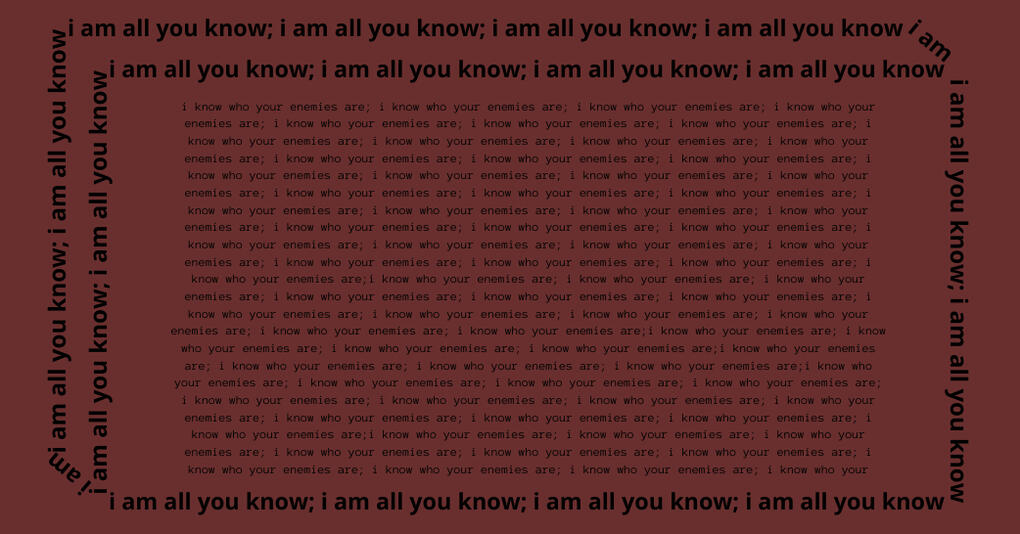
-by Osaa
Image Description: The poster above depicts a television using words/sentences. The outline of the TV is done with a repetition of the sentence "i am all you know;", whilst the screen is a block of the sentence "i know who your enemies are;". The word art is over a burgundy background.
City of Lies
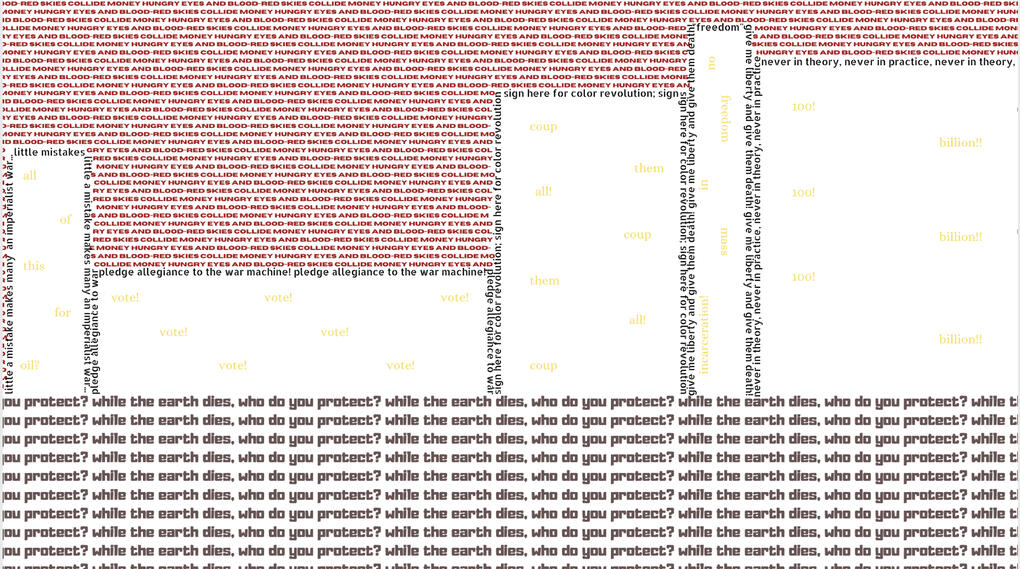
-by Osaa
Image Description: This word art poster creates an image of a city skyline. 10 rows of the repeated sentence "while the earth dies, who do you protect?" lines the bottom third of the piece, and five buildings rise from this block of text. The first building's outline is made from the sentence "little a mistake makes many an imperialist war..." repeated once and is a relatively small column. From the top left of this building, yellow writing says "all of this for oil?", with each word placed separately to resemble lights.
The next building is smaller in height but longer in width, the outline made with the sentence "pledge allegiance to the war machine!". This time, "vote!" is spread across the building in yellow writing.
The third building is taller than the first and second, but not as wide as the second. The outline consists of "sign here for color revolution;" and the 'lights' say "coup them all!".
The fourth building is the tallest and slimmest. The outline says "give me liberty and give them death!" and the 'lights' read "no freedom in mass incarceration!".
The last building is the second tallest and second widest. The outline is made of "never in theory, never in practice" and the 'lights' say "100! billion!!".
The sky above the buildings consists of red writing, made up of the the sentence "money hungry eyes and blood-red skies collide" repeated.
The background of the piece is white.